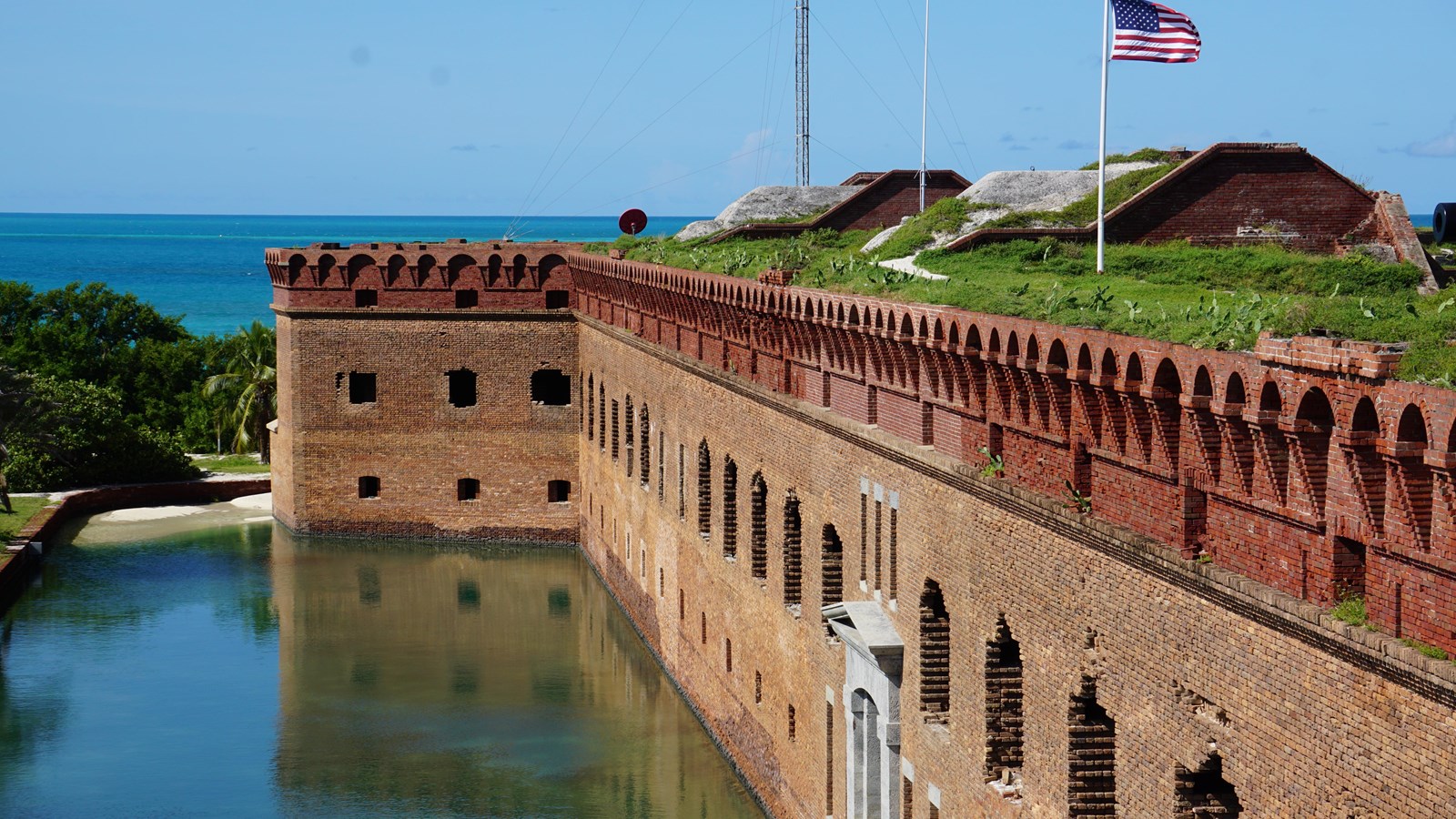Last updated: February 28, 2025
Place
Fort Jefferson

NPS Photo by Denise Diaz
Amphitheater, Benches/Seating, Historical/Interpretive Information/Exhibits, Scenic View/Photo Spot, Wheelchairs Available
Fort Jefferson was built to protect one of the most strategic deepwater anchorages in North America. By fortifying this spacious harbor, the United States maintained an important "advance post" for ships patrolling the Gulf of America and the Straits of Florida. Nestled within the islands and shoals that make up the Dry Tortugas, the harbor offered ships the chance to resupply, refit, or seek refuge from storms.
The location of the Tortugas along one the world's busiest shipping lanes was its greatest military asset. Though passing ships could easily avoid the largest of Fort Jefferson's guns, they could not avoid the warships that used its harbor.
In enemy hands, the Tortugas would have threatened the heavy ship traffic that passed between the Gulf Coast (including New Orleans, Mobile and Pensacola) and the eastern seaboard of the United States. It could also serve as a potential staging area, or "springboard" for enemy forces. From here they could launch an attack virtually anywhere along the Gulf Coast.
A powerful deterrent
Poised to protect this valuable harbor was one of the largest forts ever built. Nearly thirty years in the making (1846-1875), Fort Jefferson was never finished nor fully armed. Yet it was a vital link in a chain of coastal forts that stretched from Maine to California. Fort Jefferson, the most sophisticated of these, was a brilliant and undeniable symbol that the United States wanted to be left alone. Though never attacked, the fort fulfilled its intended role. It helped to protect the peace and prosperity of a young nation.
During the Civil War, Union warships used the harbor in their campaign to blockade Southern shipping. The fort was also used as a prison, mainly for Union deserters. Its most famous prisoner was Dr. Samuel Mudd, the physician who set the broken leg of John Wilkes Booth.
Abandoned by the Army in 1874, the fort was later used as a coaling station for warships. In 1898, the USS Maine sailed into history, departing the Tortugas on its fateful mission to Havana, Cuba. Though used briefly during both world wars, the fort's final chapter as "Guardian of the Gulf" had long since closed.
